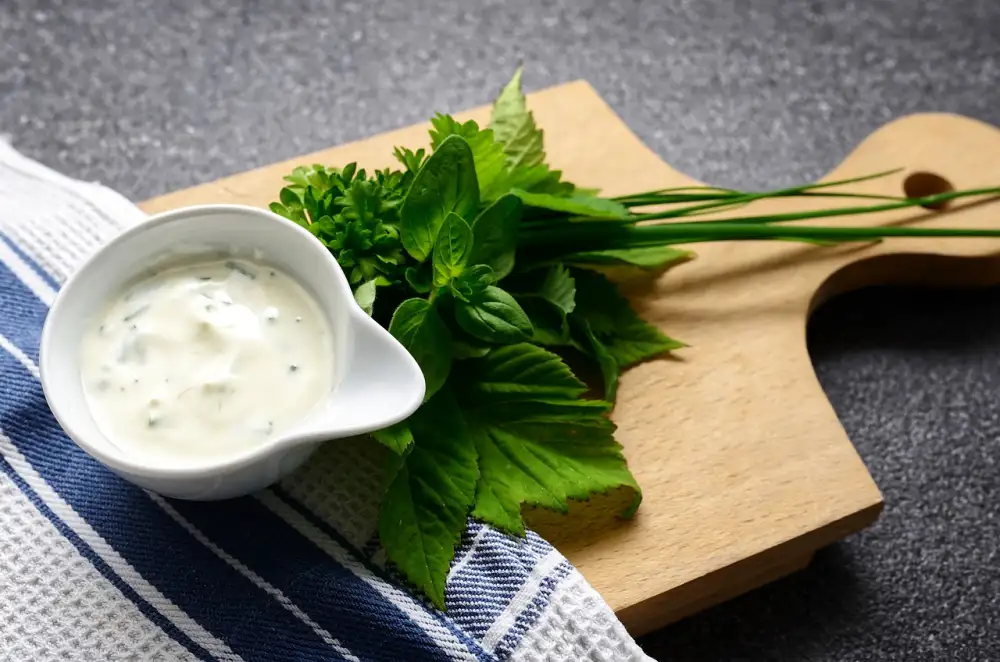Creamy Perfection: Mastering the Bechamel Sauce Recipe for Irresistible Delights

Bechamel sauce, also known as white sauce, is a classic French sauce that serves as the base for many delectable dishes. It is a creamy and velvety sauce made from butter, flour, and milk. With its rich and smooth texture, Bechamel sauce adds depth and flavor to various recipes. Whether you're making lasagna, macaroni and cheese, or a gratin dish, mastering the art of making Bechamel sauce is essential for creating irresistible culinary delights.
Ingredients required for Bechamel Sauce
To make a creamy and luscious Bechamel sauce, you will need just a few simple ingredients. Here's what you'll need:
1. Butter: Use unsalted butter for better control over the saltiness of the sauce.
2. All-purpose flour: This acts as a thickening agent for the sauce.
3. Milk: Whole milk works best for a rich and velvety texture, but you can use low-fat milk if desired.
4. Salt: Enhances the flavors of the sauce.
5. Pepper: Adds a subtle hint of spiciness to balance the creaminess.
6. Nutmeg (optional): A pinch of freshly grated nutmeg adds warmth and depth to the sauce.
With these basic ingredients on hand, you're ready to create your own delectable Bechamel sauce that will elevate any dish to new heights of flavor and indulgence.
Step-by-step instructions for making Bechamel Sauce
a. Start by melting the butter in a saucepan over medium heat. Make sure the butter is completely melted and bubbling slightly.
b. Once the butter has melted, add the flour to the saucepan. Stir continuously until the mixture turns golden brown. This step is crucial as it helps cook off the raw taste of flour.
c. Gradually whisk in the milk, pouring it slowly into the saucepan while whisking constantly. This will help prevent any lumps from forming.
d. Continue cooking the mixture over medium heat, stirring constantly, until it thickens to a smooth consistency. This usually takes about 5-7 minutes.
e. Finally, season the bechamel sauce with salt, pepper, and a pinch of nutmeg to enhance its flavor profile. Adjust seasoning according to your taste preferences.
By following these simple steps, you can easily master the art of making bechamel sauce at home. Its creamy texture and delicate flavor make it a versatile base for many delicious dishes such as lasagna, macaroni and cheese, or even as a topping for vegetables like cauliflower or broccoli.
Remember to keep stirring throughout the process to ensure a smooth and lump-free sauce. With practice, you'll be able to achieve that perfect creamy consistency that will elevate your culinary creations to new heights!
Melt the butter in a saucepan
To begin the process of making Bechamel sauce, start by melting the butter in a saucepan over medium heat. The butter should be completely melted and bubbling slightly. This step is crucial as it helps to create a smooth and creamy base for the sauce. Be careful not to let the butter brown or burn, as this can affect the flavor of the final sauce. Once the butter is melted, you are ready to move on to the next step in creating this delicious creamy delight.
Add flour and cook until golden
To continue the process of making the perfect Bechamel sauce, it is time to add the flour and cook it until golden. This step is crucial as it helps to eliminate the raw taste of the flour and develop a rich, nutty flavor.
Once the butter has melted in the saucepan, sprinkle in the flour gradually while continuously stirring with a whisk or wooden spoon. It's important to ensure that all of the flour is well incorporated into the butter to avoid any lumps.
Continue cooking this mixture over medium heat, stirring constantly until it turns a light golden color. This should take about 2-3 minutes. The golden hue indicates that the rawness of the flour has been cooked out and adds depth to the overall flavor profile of your Bechamel sauce.
Be cautious not to let the flour burn or become too dark as it can give an unpleasant bitter taste. Keep a close eye on it and adjust the heat if necessary.
Once you have achieved a beautiful golden color, you are ready to move on to the next step in creating your creamy Bechamel sauce.
Gradually whisk in milk
Step 3c: Gradually whisk in milk
Once the flour has turned golden, it's time to add the milk. Gradually pour the milk into the saucepan while continuously whisking. This step is crucial to ensure a smooth and lump-free sauce.
The gradual addition of milk allows it to incorporate with the butter and flour mixture evenly. Whisking constantly prevents any clumps from forming and helps create a velvety texture.
You can use whole milk for a rich and creamy sauce, or opt for low-fat milk if you prefer a lighter version. Some recipes even call for a combination of milk and cream for an extra indulgent result.
Continue whisking until all the milk is incorporated into the mixture. Make sure to scrape the sides and bottom of the saucepan to prevent any scorching or sticking.
The key here is patience – take your time to gradually add the milk and whisk consistently for a perfectly smooth bechamel sauce.
Continue cooking until thickened
Continue cooking the mixture over medium heat, stirring constantly with a whisk or wooden spoon. As the sauce heats up, the flour will absorb the liquid and thicken the sauce. This process usually takes about 5-7 minutes, but it may vary depending on the quantity of sauce you are making. Be patient and keep stirring to prevent any lumps from forming. The sauce is ready when it coats the back of a spoon and has a smooth, creamy consistency. Remember that the sauce will continue to thicken as it cools, so it's better to slightly undercook it if you plan on using it later. Once thickened to your desired consistency, remove from heat and proceed with seasoning as desired.
Season with salt, pepper, and nutmeg
To elevate the flavor of your Bechamel sauce, it is essential to season it with the right ingredients. Salt, pepper, and nutmeg are the key seasonings that will add depth and complexity to your sauce.
Start by adding a pinch of salt to the sauce. This will enhance the overall taste and balance out the flavors. Be cautious not to over-salt as you can always adjust later.
Next, freshly ground black pepper should be added to give a subtle hint of heat and a pleasant aroma. The amount can vary depending on personal preference, but a few twists of the pepper mill should suffice.
Lastly, nutmeg adds a unique warmth and earthiness to the sauce. Grate a small amount of fresh nutmeg directly into the sauce or use pre-ground nutmeg sparingly. It is important not to overpower the sauce with nutmeg, as its flavor can quickly become overwhelming.
After adding these seasonings, taste your Bechamel sauce and make any necessary adjustments. Remember that seasoning is subjective, so trust your palate and adjust accordingly.
With these simple additions, your Bechamel sauce will transform into a creamy masterpiece that will enhance any dish it accompanies.
Tips and variations for Bechamel Sauce
Tips and Variations for Bechamel Sauce:
1. Consistency is key: To achieve the perfect creamy texture, ensure that you cook the flour and butter mixture (roux) until it turns a golden color before adding the milk. This will help prevent any raw flour taste in your sauce.
2. Experiment with different types of milk: While traditional bechamel sauce calls for whole milk, you can try using other types of milk such as almond, soy, or oat milk for a dairy-free alternative. Keep in mind that this may slightly alter the flavor and consistency of the sauce.
3. Enhance the flavor: Add depth to your bechamel sauce by incorporating additional ingredients such as grated cheese (cheddar or Parmesan), minced garlic, chopped herbs (thyme or parsley), or even a splash of white wine. These additions can elevate the taste profile and complement various dishes.
4. Customize with spices: Apart from salt, pepper, and nutmeg, feel free to experiment with other spices and seasonings to suit your preferences. Some popular choices include paprika, cayenne pepper, mustard powder, or even a pinch of cinnamon for a unique twist.
5. Make it gluten-free: If you follow a gluten-free diet, substitute all-purpose flour with gluten-free alternatives like rice flour or cornstarch. However, keep in mind that these substitutes may affect the thickness and texture of the sauce.
Remember to adjust cooking times accordingly when making variations to ensure proper thickening and flavor development. With these tips and variations in mind, you can master the art of creating deliciously versatile bechamel sauce to enhance your culinary creations!
In conclusion, mastering the art of making Bechamel sauce opens up a world of culinary possibilities. Its creamy and velvety texture, combined with its delicate flavor, can elevate any dish to new heights. Whether you use it as a base for macaroni and cheese, lasagna, or creamy vegetable gratin, Bechamel sauce adds richness and depth to your creations.
To serve Bechamel sauce, simply pour it over your favorite pasta or vegetables for a comforting and indulgent meal. It also pairs well with grilled meats or roasted chicken. For an extra touch of decadence, sprinkle some grated cheese on top and broil until golden and bubbling.
The versatility of Bechamel sauce extends beyond savory dishes. It can be used as a base for creamy soups or as a filling for savory pastries. You can even use it as a topping for baked potatoes or as a dip for breadsticks.
Remember to store any leftover Bechamel sauce in an airtight container in the refrigerator. It will keep well for up to three days.
So go ahead and experiment with this classic French sauce. With its smooth consistency and rich flavor, Bechamel sauce is sure to impress your taste buds and add a touch of elegance to your culinary creations.
Published: 26. 02. 2024
Category: Recipes



